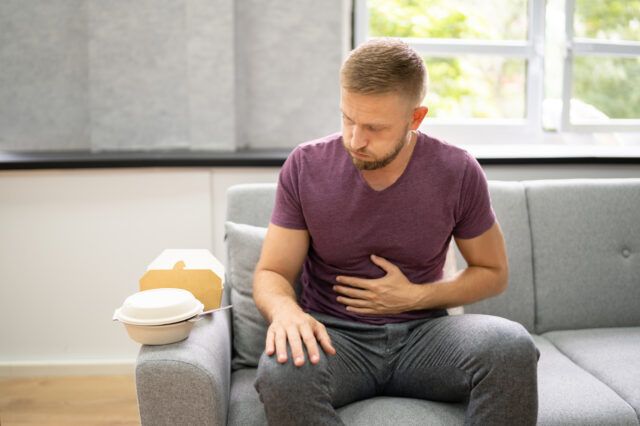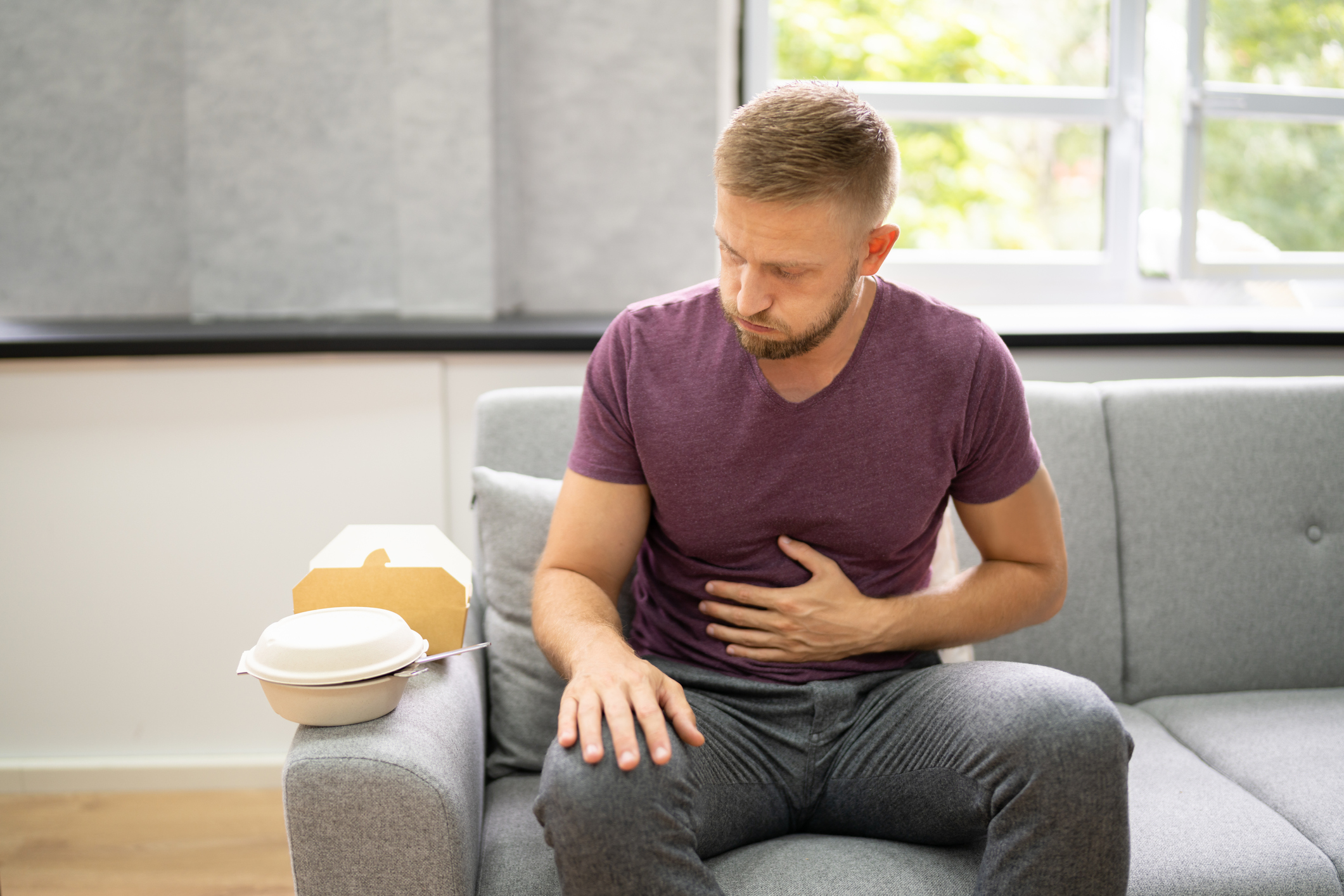Got GERD? Six GERD Signs You Shouldn’t Ignore

Eittel E. Oppenheimer, MD, a board-certified gastrointestinal surgeon in the University of Florida Department of Surgery, provides an expert’s perspective on warning signs for gastroesophageal reflux disease, or GERD, a disease that affects approximately 20% of people in the U.S.
What is GERD?
GERD is a condition in which acid from the stomach persistently regresses back up into the esophagus.
“This phenomenon takes place because a valve at the end of the esophagus, called the lower esophageal sphincter, fails to close properly when food goes in the stomach during a meal,” Oppenheimer said.

This causes the acid that is produced in the stomach to flow back up through the esophagus into the throat and mouth, resulting in unpleasant symptoms. GERD is more likely to occur when bending over or lying down after a meal, but it also occurs sporadically. However, occasional reflux is normal and is a venting mechanism for the stomach during digestion.
“When reflux is present over several weeks and occurring at least twice a week, meeting with a health care provider is important,” Oppenheimer said. “In many instances, there are underlying issues secondary to GERD.”
Common and persistent
Twenty percent of the U.S. population suffers from GERD.
“Individuals at highest risk include people who are overweight or obese, regular smokers or those who are regularly exposed to second-hand smoke, and pregnant women due to an increase in abdominal pressure,” Oppenheimer said.
Specific types of food can increase GERD risk, such as dairy, caffeine and fried or spicy dishes. Other risks are ingesting frequent large meals or being diagnosed with a hiatal hernia.
“A hiatal hernia develops when a portion of the stomach migrates up the chest due to enlargement of the diaphragmatic hiatus,” Oppenheimer said. “The presence of a hiatal hernia can interfere with the lower esophageal sphincter function.”
The presence of chronic GERD can be disabling for many and can affect many people’s quality of life. Detecting GERD can significantly improve day-to-day life with the disease.
Six common signs
1. Heartburn
A painful burning sensation in the middle of your chest caused by secondary irritation of the esophageal lining by the regurgitated stomach acid contents. Usually, heartburn occurs mostly after meals but can also happen after ingestion of liquids.
2. Regurgitation
Regurgitation of food or acid back into the mouth can be an indicator of GERD, especially when bending over or lying recumbent. This is most commonly secondary to faulty lower esophageal sphincter function. About 70% of GERD patients experience regurgitation of food or acid.
3. Difficulty swallowing
Feeling as if food is caught in your chest can be another indicator. Chemical irritation of the esophagus caused by acid reflux can create swelling and make it difficult for food to move through your esophagus.
4. Persistent clearing of the throat
After eating a meal, you may feel inclined to clear your throat or cough. This is the body’s response to irritation of the pharynx and airway by acidic contents.
5. Dry heaving
Gagging in an attempt to regurgitate without actually regurgitating is a sign of GERD. When dry heaving, your diaphragm and abdominal walls contract, causing your airways to close off, expanding the lungs and preparing your body to upheave contents from the stomach through the esophagus. Gagging, nausea and other sensations to regurgitating are typically experienced.
6. Hoarseness
A persistent cough or throat clearing may result in a hoarse voice. Acid reflux can lead to vocal cord irritation.
Living With GERD
Fortunately, GERD is a treatable condition. Patients with GERD usually respond well to modifications, including losing weight, medication or surgery.
“Losing weight promotes gastric emptying and decreases abdominal pressure associated with GERD symptoms,” Oppenheimer said. “Eat smaller, more frequent meals, more digestible for the stomach to process, and avoid recumbent positions after meals — at least 45 minutes.”
Identifying triggering meals or foods to avoid may offset symptoms. Seek medical help before making major lifestyle modifications.
Besides modifying your lifestyle, there are a number of prescription medications to treat GERD that have minimal side effects.
“Keep in mind that medications are adjuncts in treatment of GERD, and the mainstay therapy is lifestyle modification,” Oppenheimer said. “In certain instances, individuals can present with refractory GERD symptoms.”
Some common medications include antacids, H-2 receptor blockers and proton pump inhibitors, or PPIs.
Some patients do not respond to medication or they acquire resistance to it.
“In those cases, more testing is needed to look for an anatomical or physiological cause, such as a hiatal hernia,” Oppenheimer said.
For long-term treatment, some patients may benefit from anti-reflux surgery, including minimally invasive procedures like transoral incisionless fundoplication, or TIF.
“This intervention is to recreate the normal esophageal and gastric anatomy and restore the function of the lower esophageal sphincter, allowing acid contents to stay within the stomach,” Oppenheimer said.
After surgery, most patients return to their normal activities and a life free of GERD.